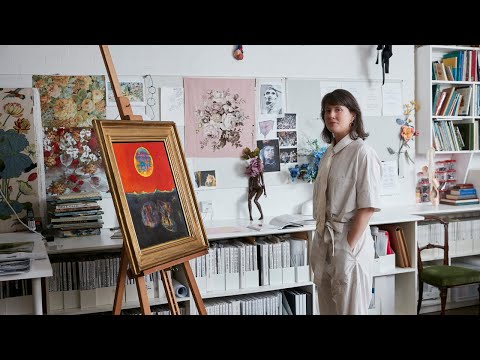Discover the Exciting World of Set Design: Job Description and Salary

Set Designer Job Description Template
Set Designer Job Description A set designer is a professional responsible for creating and designing the physical environment of a production, such as a theater play, film, or television show. They work closely with directors, producers, and other members of the production team to bring their vision to life. The main responsibilities of a set designer include developing and presenting design concepts, creating scale models or computer-generated renderings of the set, selecting and sourcing props, furniture, and other set elements, and collaborating with the art department to ensure that the set design aligns with the overall creative vision of the production. Additionally, a set designer is also responsible for managing the budget allocated for the set design, overseeing the construction and installation of the set, and coordinating with the lighting and sound departments to ensure that the set design complements the overall production design. Creativity and attention to detail are crucial skills for a set designer. They must be able to effectively communicate their ideas and concepts to the production team, as well as adapt and make adjustments based on feedback and budget constraints. In summary, a set designer plays a vital role in creating the visual world of a production. Through their artistic vision and technical expertise, they contribute to the overall success and impact of the performance or production.Set Designer Responsibilities
Set Designer Requirements
How Much Does A Set Designer Make?
Set Designer Salary
| Position | Experience Level | Salary Range |
|---|---|---|
| Junior Set Designer | Entry Level | $30,000 – $40,000 |
| Set Designer | Mid-Level | $40,000 – $60,000 |
| Senior Set Designer | Experienced | $60,000 – $80,000 |
A set designer is responsible for creating the visual appearance and layout of sets for film, television, theater, or other productions. They work closely with directors, producers, and other members of the production team to bring the vision of the project to life.
The salary of a set designer can vary depending on factors such as experience level, location, and the scale of the production. Junior set designers, who are just starting their career, can expect to earn an annual salary ranging from $30,000 to $40,000. As they gain more experience and move up to the mid-level position, their salary can increase to around $40,000 to $60,000 per year. Senior set designers with extensive experience can earn salaries ranging from $60,000 to $80,000 or more.
It’s important to note that these salary ranges are just estimates and can vary based on individual circumstances. Factors such as the production budget, industry demand, and the reputation of the set designer can also influence the salary offered.
Set Designer Salaries by Country
Top Paying Countries for Set Designer
| Country | Average Salary (USD) |
|---|---|
| United States | $66,000 |
| Canada | $54,000 |
| Australia | $51,000 |
| United Kingdom | $49,000 |
| Germany | $47,000 |
A set designer is responsible for creating the visual appearance of a production, whether it’s for film, television, or theater. They work closely with directors, producers, and other creative professionals to design and build sets that bring the script to life. The salary of a set designer can vary greatly depending on the country they work in.
According to the data, the top paying countries for set designers are the United States, Canada, Australia, United Kingdom, and Germany. In the United States, set designers earn an average salary of $66,000 per year. Canada follows with an average salary of $54,000, while Australia offers an average of $51,000. In the United Kingdom, set designers earn around $49,000, and in Germany, the average salary is $47,000.
These figures indicate that set designers can earn a competitive salary in these countries, making them attractive destinations for professionals in the field. However, it’s important to note that factors such as experience, industry demand, and cost of living also play a significant role in determining actual earnings.
A video on the topic Set Designer
Video Source : Sotheby’sInterview Questions for Set Designer
1. Can you tell us about your background and experience as a set designer?
I have a Bachelor’s degree in Fine Arts with a specialization in Set Design. I have been working as a set designer for the past five years, where I have designed sets for various theater productions, films, and television shows.
2. What is your process for creating a set design?
My process starts with reading the script and understanding the director’s vision for the production. I then create initial sketches and renderings to visualize the set design. Once approved, I work on creating detailed drawings, selecting materials, and collaborating with other departments to bring the design to life.
3. How do you ensure that your set design matches the overall concept and theme of the production?
I collaborate closely with the director, production designer, and other creative team members to ensure that the set design aligns with the overall concept and theme. We have regular meetings to discuss ideas, make adjustments, and ensure that everyone is on the same page.
4. How do you stay updated with the latest design trends and techniques?
I believe in continuous learning and staying updated with the latest design trends and techniques. I attend design conferences, workshops, and exhibitions. I also follow industry blogs and publications to keep myself informed about the latest developments in set design.
5. Can you describe a challenging set design project you have worked on and how you overcame the challenges?
I once worked on a production that required a rotating set, which was technically very challenging. I collaborated closely with the production team and consulted with experts to find innovative solutions. Through careful planning and problem-solving, we were able to successfully create the rotating set, which added an extra layer of dynamism to the production.
6. How do you handle working within a budget and time constraints?
I am accustomed to working within budget and time constraints. I prioritize and plan accordingly to make the most efficient use of available resources. I also have good relationships with suppliers and vendors, which helps me in finding cost-effective solutions without compromising on the quality of the set design.
7. How do you ensure that the set design is practical for the actors and crew to work with?
I believe in creating sets that are both visually appealing and practical for the actors and crew. I regularly communicate with the production team to understand their needs and incorporate their feedback. I also consider factors like set changes, safety, and ease of movement while designing the sets.
8. Can you provide an example of a set design that you are particularly proud of?
I am particularly proud of a set design I created for a musical production. The design incorporated a multi-level stage with intricate set pieces that seamlessly transformed the scene from a city street to a rooftop. The design received positive feedback from the audience and contributed to the overall success of the production.
9. How do you handle disagreements or conflicts with the director or other team members regarding the set design?
Open communication is key when dealing with disagreements or conflicts. I believe in having constructive discussions where everyone’s opinions are heard and respected. I am open to making adjustments and finding compromises to ensure that the final set design meets the vision of the production while addressing any concerns raised by team members.
10. What skills do you think are essential for a successful set designer?
Some essential skills for a successful set designer include strong artistic and visual sense, creativity, attention to detail, excellent communication and collaboration skills, the ability to work under pressure, problem-solving abilities, and proficiency in design software and tools.






